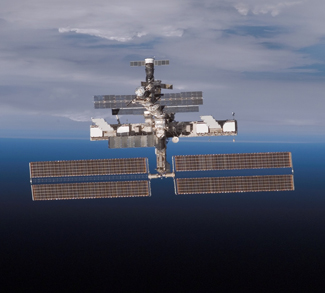In 1966, the General Assembly of the United Nations (UN) agreed on the establishment of the Outer Space Treaty, which was based on the Declaration of Legal Principles Governing the Activities of States in the Exploration and Use of Outer Space, adopted several years prior. By 1967, the Russian Federation, The United Kingdom (UK), and the United States (US) signed the Treaty, and it entered into force in October that same year.
For the past 50 years, the Outer Space Treaty has remained the backbone of space governance, providing the framework on international space law and numerous principles. However, the strength of that backbone, often defended by its long history, cannot be expected to cloak the reality of an unstable peace forever, nor should it.
The principles of the Outer Space Treaty range from (freedom of) exploration, non-national appropriation by claim of sovereignty, the diplomatic nature of astronauts, to damage liability and state avoidance of harmfully contaminating space and its celestial bodies. Fissures have revealed themselves over the course of the treaty’s lifespan, but have typically been brushed off as the test of time and instances have served to only strengthen the Treaty and deepen national support for it.
Much of the world’s states have signed on to the Treaty, recognizing its protocols, but the obvious problem is the application of those UN-backed conventions to states that chose not to sign-on. With state backing, the UN has demonstrated the complexity of policing many of the world’s conflict and conflict zones, mediating between hostile actors, and managing delicate peace agreements. How would the UN be equipped to govern in such cases up in outer space? The rules can be ignored by anyone, from states to transnational corporations (TNCs), with few measures in place to punish those actors for their transgressions.
For the past half a century the world has observed a mutual respect for the Treaty, with its signatories seemingly recognizing the importance and reach of its legal foundations. The reasons for this could be many. One less affecting reason may be both a lack of advanced technology necessitating Treaty-damaging exploitations of outer space and its bodies. Another might be found in the relationship between activities in outer space and those here on Earth. With the information age and the importance of security and defense-based communication, and information sharing, there could be greater prospects for violating the conventions of the Outer Space Treaty.
The idea that outer space has been used for peaceful purposes is deeply disingenuous. Indeed, the area just beyond Earth has served as an important region for facilitating potential hostile activity. While no actor has the ability to claim anything in space as its very own, this does not preclude the potential for conflict between two or more states in or over that area – mere presence alone is enough to necessitate a defensive or aggressive posture even if a claim of ownership over a particular has not been made.
Hostile encounters on Earth serve as a case in point for this, with numerous areas demarcated for mutual and peaceful purposes, in principle hostilities can break out at any time. With a lack of “space police” – though there is the Committee on the Peaceful Uses of Outer Space (COPUOS) – as well as declarations that space remains a no-claims area, the peace and security architecture of this area has and continues to remain delicate, held together by trust.
Although a number of past incidents demonstrate the resolve of nations to maintain peace in space, there have been attempts to lay celestial ownership. For example, the Bogotá Declaration in 1976 was a bold attempt to circumvent the Outer Space Treaty’s declaration that national appropriation cannot take place in outer space. In an attempt by eight states sharing the Equator to defy the no-appropriations rule, the Bogotá Declaration labeled Geostationary Orbit (GEO) a “natural resource” as opposed to a region of space. In an effort to extend the concept of nature and naturalness the attempt reverted to the jus cogens principle of international law.
Some of the declarations were indeed valid and accurately pointed to the advent of cosmic conflict, over which the UN and other regulating bodies remained generally sanguine.
Technology has begun to catch-up to state and non-state interests and aspirations in space. The possibility exists that human will soon return to the Moon and that footprints will be stamped on the surface of Mars. Exploratory ambitions in space will eventually converge with economic interests and possibilities of mining asteroids, and establishing more sophisticated defense and security measures thousands of miles above Earth’s surface. Thus, national appropriation in space is a dormant but certainly not a dead issue.
With just more than half of the international community affixed to the Outer Space Treaty, a large number of states have failed to latch on to its principles. The world’s rising powers like China have made clear demonstrations of their interest in “testing” the tautness of the Treaty, and the international community’s commitment to its preservation. China’s 2007 operation against its satellite – the Fengyun-1C (FY-1C) – by means of an anti-satellite (ASAT) device with a kinetic kill vehicle (KKV) payload launched from Xicheng Space Launch Center, sparked worldwide controversy with states calling this action aggressive in nature and more of a demonstration of military capacity, resolve, and Treaty defiance.
China’s actions were not interpreted as a violation of the Treaty because its weapons systems did not fall under the category of Weapons of Mass-Destruction (WMDs) though they can certainly be seen as having mass-effect due to the debris cloud generated from the procedure. The incident, which resulted in approximately 35,000+ fragments larger than one centimeter, raises questions about the impact of space junk and abilities to “escape” the layer of debris surrounding Earth.
Like other International Law shortcomings, its focus remains predominantly on nations rather than equally important and effective non-state actors. This is where the Outer Space Treaty requires a significant overhaul. Private companies are a viable way for governments to skirt around the conditions charted by the Treaty for appropriate activity in space. Even people, far from representing an entire country, have the potential to make claims in outer space, provided they have the financial capabilities or even (state) backing to engage in such ventures.
The United States’ (US) Space Act of 2015 has been called a fruitful step forward for space governance. However, despite a special clause stating that the US makes no claim over anything in outer space, the Act extends the boundaries of activity, and enhances the ambiguity of celestial activities by individuals and states that could work together. After establishing a significant presence in a particular area and subsequently developing those areas, back peddling on development or extrapolation projects would become increasingly difficult. In other words, undoing the work that inadvertently signals ownership over something could become a meteoric feat, depending on the circumstances.
The basis of the Outer Space Treaty is deserving of scrutiny because it was penned when both state and non-state capabilities failed to come close to undertaking the sort of ventures that press beyond conceivability today. The principle of establishing law in a region remains valid, and one that most states today will probably continue to support, however as witnessed in other geopolitical realms, international law cannot always keep pace with modern day challenges, including state and non-state political and economic interests that have the potential for resulting in violence conflict and war.
Without revamping the rules that were originally established to peacefully govern beyond Earth, one cannot ignore the possibility of an arms race potentially to the militarization of space or even real-life Star Wars taking place in the universe.




